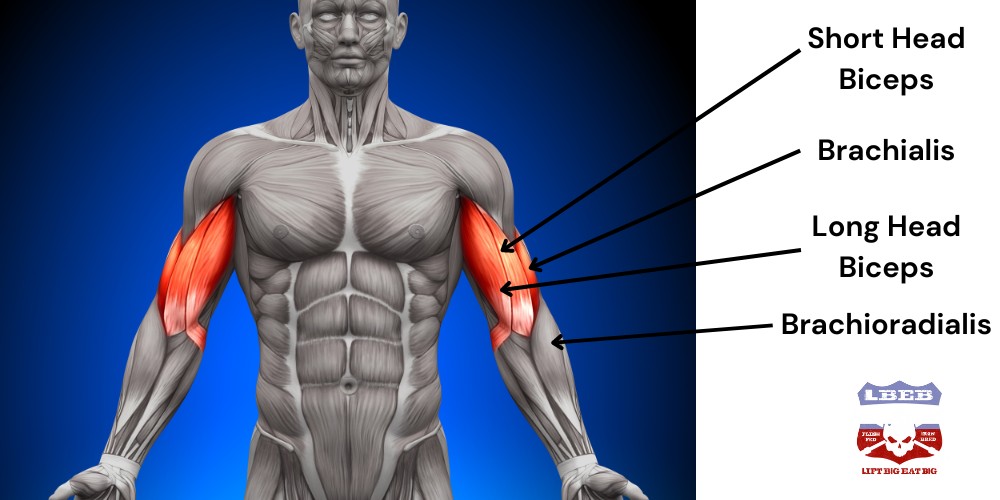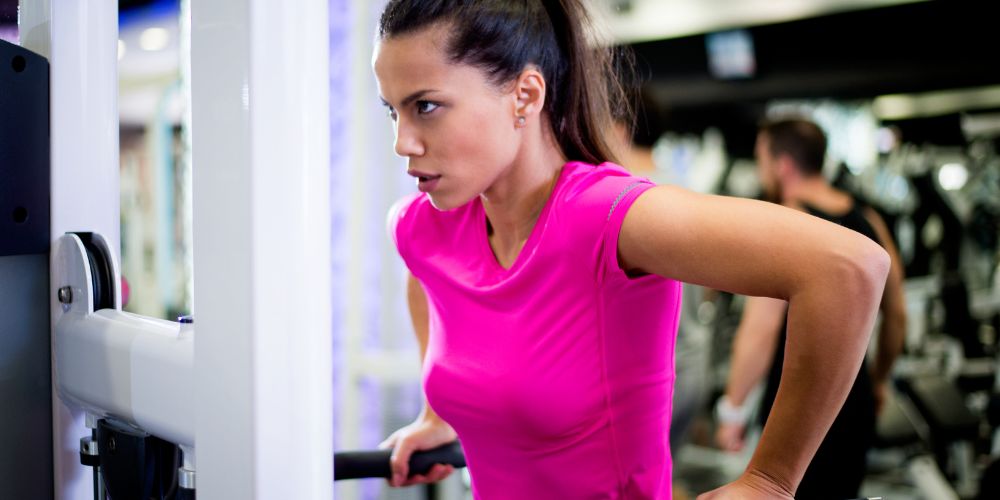Dips are a staple bodyweight exercise. A prison favorite, as one might say. But are you making the mistake of performing dips to hit your biceps?
Dips don’t work the biceps; the main movements are elbow extension and shoulder flexion. The chest, shoulders, and triceps are the prime movers for these actions, not the biceps.
To understand the extent of why the dips don’t work the biceps, we must understand basic biceps anatomy.
Table of Contents
Biceps Anatomy
The biceps are made of two muscle heads:
- Short head
- Long head

Both heads originate at the shoulder and insert on the radius bone in the outer forearm [1]. The primary function of the biceps is to flex the elbow and supinate the forearm. They also help flex the shoulder. The biceps brachii elicit the most significant muscle activation when the forearm is supinated.
But the brachialis muscle is the strongest elbow flexor and is targeted with a neutral hand position. It originates on the bottom of the upper arm and inserts on the ulnar bone in the inner forearm. Its primary function is elbow flexion [2].
The brachioradialis contributes to elbow flexion and pronates and supinates the forearm. The most significant activation occurs when performing curls with a pronated hand position [3]. Therefore, maximizing biceps growth requires performing elbow flexion with various hand positions.
Do Dips Work Biceps?
Dips don’t work the biceps, as the movement is controlled by the chest, shoulders, and triceps [4]. While the elbow flexes during the dip, the chest and triceps act eccentrically, creating tension when lowering your body.
The biceps shorten, but little tension is placed on them due to gravity. Then when pushing, the triceps and chest contract and shorten to complete the dip. While the biceps lengthen during this phase, there is no tension.
Therefore, since the biceps have very little tension during the dip, they will not grow. Mechanical tension is a key mechanism for gaining muscle [5].
How Do You Target Biceps On Dips?

You target the biceps on dips by not doing dips to hit your biceps. Instead, choose exercises that directly train your biceps. These would be elbow flexion exercises with varying hand positions to target the different muscles of the upper arm.
For example, barbell curls for the biceps brachii, hammer curls for the brachialis, and reverse curls for the brachioradialis.
Do Dips Make Your Biceps Bigger?
Dips make your arms bigger, but not your biceps. Dips target the triceps creating a larger muscle on the back of your arm. This can make your biceps look more prominent.
Are Dips For Biceps Or Triceps?
Dips are for the triceps and shouldn’t be modified to try and target the biceps, as it’s not possible. Place dips on push, chest, or arm days for logical programming.
Summary
Dips don’t work the biceps and can’t be modified to hit them. Use the dip to work your triceps and bicep curls to work your biceps. If you want to get bigger biceps, focus on elbow flexion.
References
1. Tiwana, M. S., Charlick, M., & Varacallo, M. (2018). Anatomy, shoulder and upper limb, biceps muscle.
2. Plantz, M. A., Bordoni, B. (2022). Anatomy, Shoulder and Upper Limb, Brachialis Muscle.
3. Kleiber, T., Kunz, L., & Disselhorst-Klug, C. (2015). Muscular coordination of biceps brachii and brachioradialis in elbow flexion with respect to hand position. Frontiers in physiology, 6, 215.
4. Bagchi, A. (2015). A comparative electromyographical investigation of triceps brachii and pectoralis major during four different freehand exercises. Journal of Physical Education Research, 2(2), 20-27.
5. Schoenfeld, B. J. (2010). The mechanisms of muscle hypertrophy and their application to resistance training. The Journal of Strength & Conditioning Research, 24(10), 2857-2872.
